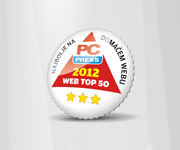The study “New Media, New Influencers and Implications for the Public Relations Profession” was conducted by a team of Fellows of the Society for New Communications Research, from September 2007 – November 2007.
Survey Methodology and Sample
The population of interest was “social media power users,†i.e., communications professionals with a deep knowledge and heavy usage pattern of social media tools including blogs, podcasts, online video,social networks, and other new and emerging communications tools and technologies.
Of those organizations surveyed, 78% use blogs, 63% use online video, 56% use social networks and 49% use podcasts in their organization’s communications initiatives. The total sample size for the survey portion of the study was 297 communications professionals: 37% of whom were public relations / marketing communications professionals working within an agency, 35% of whom were in-house public relations and corporate communications professionals; 22% were public relations and marketing communications consultants; 4% worked for media companies and 2% were advertising and/or brand marketing professionals.
Main Findings
- Fifty-seven percent of respondents said that social media tools are becoming more valuable to their activities as more customers and influencers use them. Twenty-seven percent reported that social media is a core element of their communications strategy.
- While blogs (80+ percent), online video(60+ percent) and social networks (50+ percent) were ranked as the most popular social media tools, respondents spread their activities across a wide range of channels.
- The most effective social media tools are online video, blogs, newsgroups/forums, social networks, podcasting (respectively). The variance in perceived effectiveness among the five most popular tools was so small as to be statistically insignificant.
- The most useful social media metrics that the respondents use to evaluate influence generated by their own social media campaigns are standard Internet measures like search engine ranking and web site traffic. Fifty-one percent of respondents are formally measuring the effects of their organization’s social media initiatives. The metrics they value most are enhancement of relationships with key audiences, enhancement of reputation, customer awareness of program and comments/posts relevant to organization/products.
- The top three criteria for determining the relevance and potential influence of a blogger or podcaster are: quality of content on the blog or podcast relevance of content to the company or brand and search engine rankings. Suprisingly, the criteria that measured online engagement for blogs and podcasts were among the least important to the respondents.
- Their top three criteria for evaluating influence reflect the importance of online engagement in social networks: participation level, frequency of posting by the community member and name recognition of the individual.




